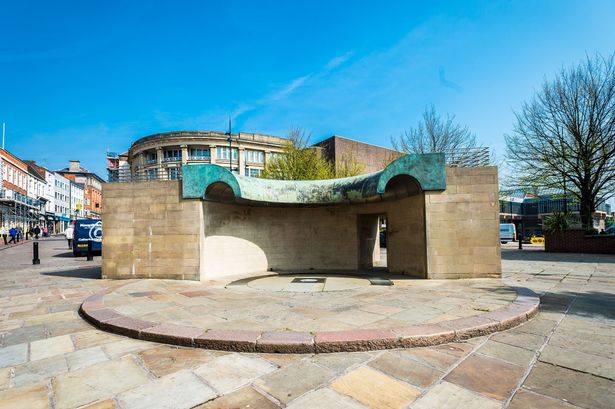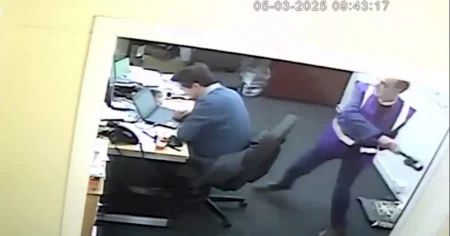The cascading waterfall in Derby’s Market Place, once a vibrant centerpiece of the urban landscape, has become a stagnant symbol of budget cuts and neglect. Derbyshire County Council, facing financial pressures, made the decision to deactivate the waterfall, citing operational costs as the primary reason. This decision, seemingly pragmatic in the face of economic constraints, has had unintended consequences, transforming the once-attractive water feature into an unsightly spectacle marred by pigeon droppings and accumulating grime. The council’s current stance is that there are “no plans” to reactivate the waterfall, leaving its future uncertain and sparking debate within the community.
The waterfall’s deactivation reflects a broader trend of local authorities grappling with reduced budgets and the difficult choices they necessitate. Maintaining public amenities, even aesthetically pleasing ones, can be costly, involving expenses related to water usage, electricity for pumps, regular cleaning, and potential repairs. While the council’s decision to prioritize essential services over what some may perceive as a non-essential amenity is understandable, the resulting deterioration of the waterfall raises questions about the long-term implications of such cost-saving measures. The unsightly state of the dormant waterfall not only detracts from the aesthetic appeal of the Market Place but also potentially poses hygiene concerns.
The accumulation of pigeon droppings, a common issue in urban areas, presents health risks due to the potential transmission of diseases. The stagnant water within the deactivated waterfall further exacerbates the problem, creating a breeding ground for bacteria and other microorganisms. This unsanitary environment not only raises concerns for public health but also impacts the overall perception of the Market Place, potentially deterring visitors and impacting local businesses. The council’s inaction in addressing the deteriorating condition of the waterfall underscores the complex interplay between budgetary constraints and the responsibility for maintaining public spaces.
The debate surrounding the waterfall’s future highlights the diverse perspectives within the community. Some argue that in times of economic hardship, prioritizing essential services such as social care and education is paramount, and that the cost of maintaining a non-essential amenity like a waterfall is simply not justifiable. Others contend that the waterfall contributes significantly to the ambiance and attractiveness of the Market Place, arguing that its continued disrepair negatively impacts the town’s image and potentially discourages tourism and economic activity. Finding a balance between fiscal responsibility and maintaining the quality of public spaces is a challenge faced by many local authorities.
The “no plans” statement from Derbyshire County Council suggests that the waterfall’s reactivation is unlikely in the foreseeable future. This stance leaves several questions unanswered. What are the long-term plans for the structure? Will it be dismantled, renovated, or simply left in its current state of disrepair? The lack of clarity regarding the waterfall’s future fuels speculation and underscores the need for open communication between the council and the community. A public discussion involving stakeholders could potentially lead to creative solutions, such as community fundraising initiatives or exploring alternative, more cost-effective methods of maintaining the waterfall.
The case of Derby’s deactivated waterfall serves as a microcosm of the larger challenges facing local governments in balancing budgetary constraints with the responsibility of maintaining public amenities. While cost-saving measures are often necessary, the long-term consequences of neglecting public spaces must be carefully considered. The unsightly and potentially unsanitary condition of the dormant waterfall highlights the need for proactive solutions that address both fiscal responsibility and the importance of maintaining vibrant and attractive public spaces. Open communication, community engagement, and exploring innovative solutions are crucial to navigating these complex issues and ensuring the long-term well-being of our urban environments. The future of Derby’s waterfall remains uncertain, but its current state serves as a stark reminder of the delicate balance between budgetary realities and the desire to maintain the quality of life in our communities.














